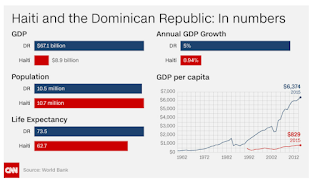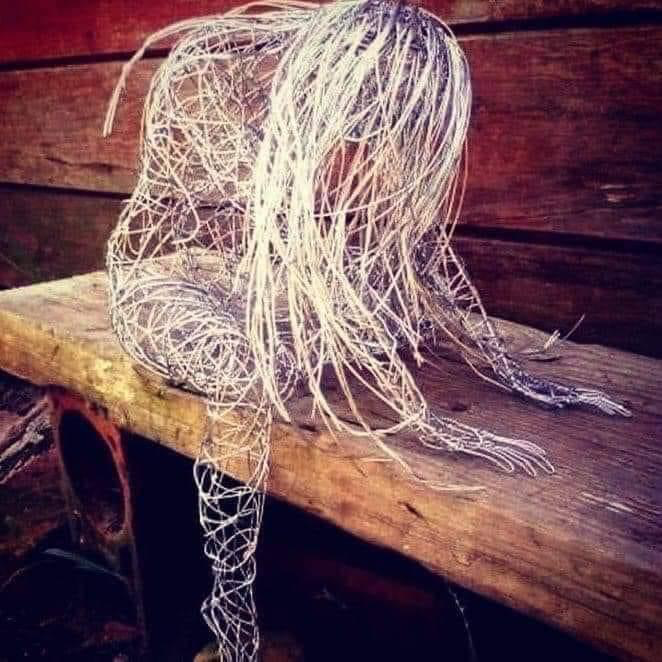The Tale of Two Nations -the social creation of a racial state
Often when discussing Haiti, it is easy to forget that it shares
an island with another nation-Santo, Domingo. In 1802 when Leclerc was sent to reestablish
French rule, they were partially successful as Toussaint was forced to flee
Santo Domingo. As the Republic of Haiti celebrated
its first year of independence, JJ Dessalines led a Haitian force to expel the
remaining French occupiers in Santo Domingo. The attempts to remove the Europeans resulted
in a bloody trail of destruction as hundreds of residents were slaughtered and dozens
of towns destroyed. When Haiti finally
gained independence in 1804, it took control and ruled over Santo Dominico for
22 years. It was not until 1844 that the
Dominican Republic was formed, but not until 1865, before it finally gained its
independence from Spain. Coincidently,
it was Haiti that helped the Dominican Republic defeat Spain. (Bishop and Fernandez 2017) From the
beginning, the Dominican Republic was primarily a light-skinned population that
espoused Eurocentric ideologies, whereas Haiti was a nation of formerly enslaved
people and considered black. Dominican
leaders often presented the Haitians as racially inferior and institutionalized
whiteness. Anti'Haitian sentiments
resulted in "ethnic cleansing" as thousands of Haitians were
slaughtered under the dictator Rafael Trujillo in the 1930s. In what would be known as the Parsley
Massacre, those persons that mispronounced the word "perjil" (meaning
parsley) or did not have the proper Spanish inflection were marked for
death. Under Trujillo, a government plan
to "lighten" the Dominican population was instituted as Jewish exiles
from the Spanish Civil war were encouraged to immigrate. Dominicans were encouraged to marry only
white persons to lighten the population further. These policies are ironic given that the first
enslaved Africans imported into America were destined to land in the Dominican Republic,
and over 85% of the population had some African ancestry. To be Dominican was to be anything but black
and certainly not Haitian. Consequently,
as espoused by the elites, the Dominican nationality viewed themselves as a
mixture of indigenous and Spanish.
Haitians were viewed as morally inferior, while the Dominicans
represented a more cosmopolitan, superior group akin to the white Europeans. (San Miguel
([1997]2005))
From these myths, a whole set of realities were
created. The Haitians spoke a broken
French known as Creole, they practiced Vodou and witchcraft, and their failures
were a consequence of their actions. The
Dominicans, alternatively speaking proper Spanish, were Roman Catholics, and
their failures resulted from tragic victimization. (Shaw 2021)
Before 1960, the Dominican Republic and Haiti were almost
equal in terms of GDP and capital incomes.
But now, the Dominican Republic is nearly 800% higher. And so today, Haiti, once the jewel of the
Caribbean, is now the pariah as the US and other world powers orchestrated the
demise of this Black-led Nation. As we
have seen, over the last two centuries, continuing up to this day, Haiti has
been targeted, occupied, marginalized, ostracized, and exploited to this
present day. As a result, Haiti is the
poorest Nation in our hemisphere. The
same policies, practices, and intentional strategies that created such a
nation, would be duplicated, refined, and reinvented as our Nation discovered
Jim Crow, redlining, the cradle-to-prison pipeline, and the resulting
ghettos.



Comments
Post a Comment